Toast of London Font: Essential Design Tips for Impactful Branding and Design
The Toast of London font is a unique display typeface, perfect for adding a vintage, sophisticated, or even a touch of playful charm to your designs. Think of it as a handwritten script with a distinctly British flair, evoking a sense of heritage and artisanal craft. Mastering its use involves understanding its personality and applying it strategically.
Ever stumbled upon a font that just feels right? A font that instantly communicates a specific mood or era? That’s the magic of display typefaces like Toast of London. It’s a font that doesn’t just present text; it tells a story. However, using such a distinct font effectively can feel a little daunting, especially if you’re new to the world of typography. Where do you use it? What colors work best? How do you make sure it’s readable? Don’t worry, we’ve all been there! In this guide, I’ll break down exactly how to use the Toast of London font like a pro. We’ll explore its best applications, essential design pairings, and some creative tips to make your projects shine. Get ready to transform your designs with this incredibly characterful typeface!
Understanding the Toast of London Font: More Than Just Letters
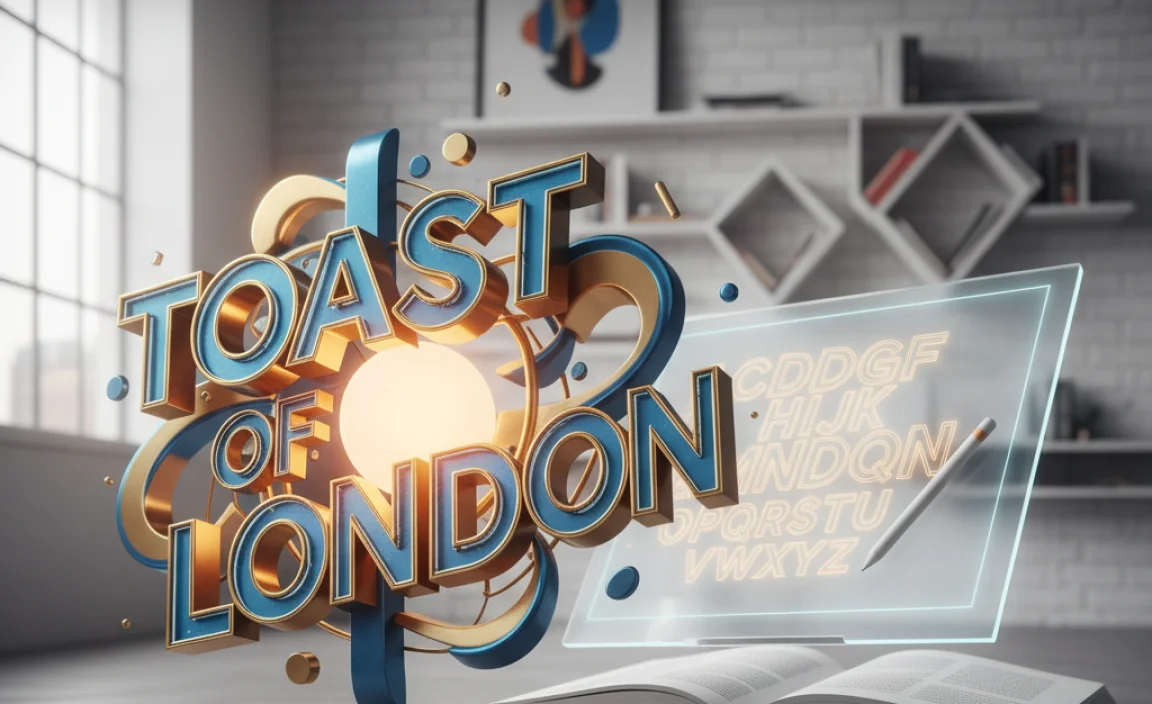
Before we dive into design tips, let’s get acquainted with the Toast of London font itself. This isn’t your everyday sans-serif or serif font. It’s a script font, specifically designed to mimic handwriting, but with a professional, refined edge. Its organic strokes, slight variations in weight, and often cursive-like connections give it a warm, personal, and often luxurious feel. It’s evocative of old-fashioned advertising, artisanal brands, and a certain timeless elegance. Think of it as the typographic equivalent of a perfectly brewed cup of tea on a rainy afternoon, or a handwritten note from a distinguished friend.
The “Toast of London” name itself conjures images of classic British pubs, theatre marquees, and perhaps even a nod to the iconic show it shares its name with. This context is crucial, as the font carries these associations inherently. It excels when you want to convey a sense of:
- Heritage & Tradition: Brands looking to emphasize their long history or classic approach.
- Craftsmanship & Quality: Artisanal products, bespoke services, or high-end goods.
- Sophistication & Elegance: Invitations, formal event branding, luxury packaging.
- Warmth & Personal Touch: Personal blogs, small businesses, heartfelt communication.
- Nostalgia & Retro Charm: Projects aiming for a vintage or a specific historical aesthetic.
It’s important to remember that because it’s a display font, its primary strength lies in headlines, logos, and short-form text where its unique character can be appreciated without sacrificing readability. For longer blocks of text, it’s generally best paired with a more neutral, legible font.
Where Can You Use the Toast of London Font? Proven Use Cases
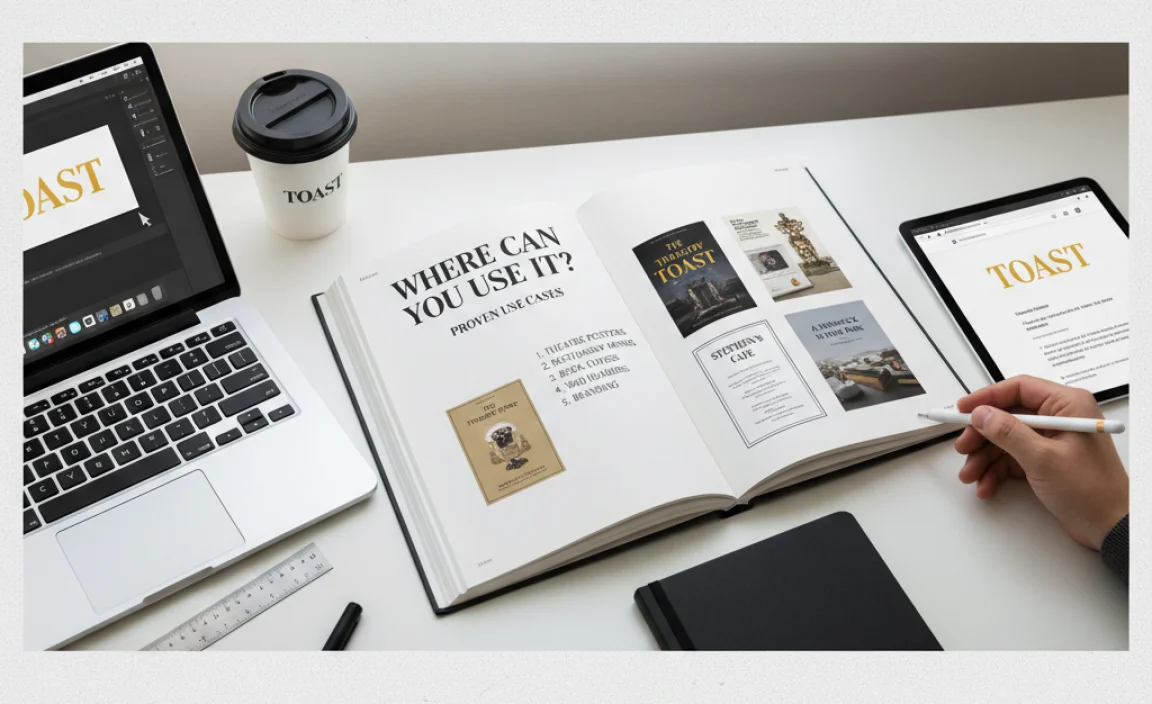
The versatility of the Toast of London font is one of its greatest assets. While its personality is strong, it can be adapted to various creative endeavors. Here are some of the most effective places to incorporate it:
1. Branding and Logo Design
This is where Toast of London truly shines. Its distinctive character makes it ideal for creating memorable logos. Imagine a craft brewery, a bespoke tailor, a high-end bakery, or a vintage-inspired boutique using this font for their name. It immediately communicates a sense of quality and established character. When used in a logo, it can be the primary element that defines the brand’s visual identity.
Design Tip: For logos, consider how Toast of London works with a tagline or descriptor in a contrasting, simpler font to ensure balance and readability. For instance, “Artisan Breads” in Toast of London, with “Freshly Baked Daily” in a clean sans-serif below.
2. Website Headings and Titles
Break up the monotony of standard website typography by using Toast of London for your main headings or feature titles. It can add a unique personality to a blog post, a section on an e-commerce site, or even the masthead of a digital magazine. It grabs attention and sets a specific tone for the content it introduces.
Design Tip: Use it for the main title of a blog post or a category header on an online store. Ensure the font size is large enough to appreciate its details, but not so large that it overwhelms the page. Check out resources like Google Fonts to explore other complementary display and readable fonts for your website.
3. Packaging Design
For products that aim for a premium, artisanal, or heritage feel, Toast of London is a fantastic choice for packaging. It can be used for brand names on wine bottles, jam jars, gourmet food items, stationery, or gift boxes. The script’s elegance adds a touch of luxury that can elevate the perceived value of the product.
Design Tip: Experiment with embossing or foil stamping the Toast of London font on packaging for an extra layer of tactile and visual sophistication. This works exceptionally well for luxury goods.
4. Invitations and Stationery
Formal invitations for weddings, special events, or even elegant business correspondence can benefit immensely from the refined charm of Toast of London. It lends a personal, heartfelt, and sophisticated touch, setting the tone for the occasion before guests even arrive.
Design Tip: For wedding invitations, consider using Toast of London for the couple’s names and the main event details, and a simpler serif or sans-serif for the RSVP information and venue addresses to ensure clarity.
5. Marketing Materials
From posters and flyers to brochures and social media graphics, Toast of London can add a distinctive flair. It’s particularly effective for promotional materials for events, workshops, or products that align with its vintage or artisanal aesthetic. It helps your marketing stand out in a crowded visual landscape.
Design Tip: Use it sparingly for key calls-to-action or impactful phrases on posters. Pair it with a clean, readable font for the body text and smaller details on the flyer.
Essential Design Tips for Using Toast of London Font
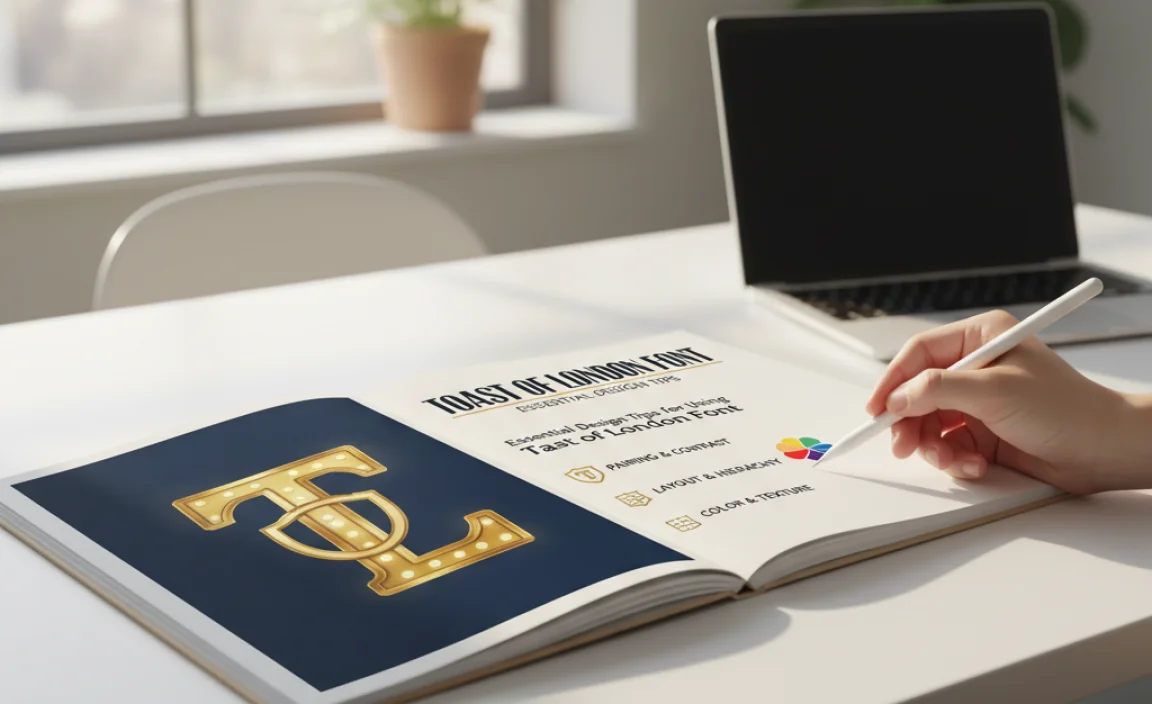
Now that you know where to use it, let’s get into the nitty-gritty of how to use Toast of London effectively. Like any strong personality font, it requires a thoughtful approach to achieve the best results.
1. Prioritize Readability: Context is Key
As a script font, Toast of London’s legibility can decrease with smaller sizes and extensive copy. Its intricate details and flowing connections are best appreciated when large and clear. Therefore, its primary role should be for display purposes – think headlines, logos, short phrases, and decorative elements.
Best for: Short titles, brand names, single words, decorative accents.
Avoid for: Body copy, long paragraphs, small print, captions in busy layouts.
2. Embrace Pairing: The Power of Contrast
Toast of London rarely works in isolation. To create a balanced and professional design, it needs a companion font that offers contrast. This usually means pairing it with a clean, straightforward typeface. Sans-serif fonts are often the best partners, providing a modern counterpoint to the script’s classic feel. Alternatively, a simple, understated serif can also work, especially if you’re aiming for a more traditional and literary aesthetic.
Recommended Font Pairing Categories:
- Simple Sans-Serifs: Open Sans, Lato, Montserrat, Roboto. These offer excellent readability and a clean, contemporary feel. They won’t compete with Toast of London but will support it.
- Understated Serifs: Merriweather, Garamond (use with caution, can lean too formal), Georgia. These can work if you want a classic, bookish vibe.
Example Pairing:
| Purpose | Toast of London Font | Companion Font (Sans-Serif) |
|---|---|---|
| Logo Headline | Artisan Coffee Roasters | – |
| Website Section Title | Our Story | – |
| Invitation Name | Sarah & James | – |
| Product Label | Handcrafted Marmalade | – |
| Tagline or Descriptor (under headline) | – | Specialty coffee, freshly roasted. |
| Address or Details (on invitation) | – | The Grand Ballroom, Saturday, October 26th |
3. Color Considerations: Complementary Palettes
The color you choose for Toast of London can dramatically affect its mood. Given its tendency towards vintage sophistication, certain color palettes enhance its best qualities.
- Classic & Elegant: Deep navies, rich burgundies, forest greens, charcoal grays, and classic black or crisp white.
- Warm & Inviting: Earthy tones like terracotta, warm browns, creams, and muted ochre.
- Luxurious Accents: Gold, silver, or rose gold can add a premium feel, especially when used for special elements like event invitations or luxury packaging.
- Contrast is Your Friend: Always ensure sufficient contrast between the font color and its background for optimal readability.
A common mistake is using too many bright, neon, or clashing colors with a sophisticated script like Toast of London. This can make it look garish rather than elegant. Stick to palettes that support its inherent character.
4. Spacing (Kerning and Leading) Matters
For script fonts, proper spacing is paramount.
Kerning (the space between individual letter pairs) is crucial for Toast of London. Pay close attention to letters that might run into each other or have awkward gaps. Good font software or design programs allow you to adjust kerning manually for specific letter combinations.
Leading (the vertical space between lines of text) is also important, especially if you decide to use Toast of London for slightly longer phrases within a design. Ensure there’s enough space between lines so they don’t become a jumbled mess.
Design Tip: Many design programs have automatic kerning features. Always review the output and make manual adjustments where needed. For Toast of London, tightening the kerning slightly might enhance its flowing, connected appearance.
5. Consistency in Use
Once you’ve decided to use Toast of London for specific elements (e.g., brand name and main headings), stick to that decision across your project or brand. Inconsistent application can lead to a disjointed visual identity. If it’s the header font for your blog, use it for all major post titles. If it’s your logo font, ensure its usage in all marketing materials is consistent.
6. Test Across Different Mediums
What looks great on a screen might need adjustments for print, and vice-versa. If you’re printing flyers or packaging, always do a test print. Check how the font renders at the intended size and on the specific paper stock. For web use, test it on different browsers and devices to ensure it appears correctly and legibly. Font rendering can vary, so testing is key to a polished final product.
7. Leverage its Personality, Don’t Force It
Toast of London has a distinct personality. Don’t try to make it fit into a design that requires a stark, minimalist, or aggressively modern feel. Instead, embrace its strengths. It’s perfect for brands that want to feel established, artisanal, or have a touch of old-world charm. If your brand identity is more about cutting-edge technology or a stark, minimalist aesthetic, you might want to explore other font options.
For inspiration on creating visually compelling designs, look at resources that showcase effective typography. Websites like It’s Nice That often feature projects with outstanding visual identity and typographic application.
When to Be Cautious with Toast of London Font

While Toast of London is a fantastic font, there are indeed situations where it’s best to step back and consider alternatives. Being aware of these limitations will save you design headaches and ensure your projects hit the mark.
- Extensive Text Blocks: As mentioned, it’s not designed for long-form reading. Trying to force it into paragraphs will result in user frustration and poor readability.
- Low-Contrast Backgrounds: If your design involves busy patterns or colors that clash with the font’s color, the text can become illegible.
- Highly Functional/Technical Interfaces: For technical software, dashboards, or user interfaces where clarity and speed of information are paramount, a highly stylized script isn’t optimal.
- Modern/Minimalist Aesthetics: If your brand identity screams ultra-modern, geometric, or starkly minimalist, Toast of London might feel out of place.
- Extremely Small Sizes: In very small print (like footnotes or tiny labels on tiny products), the fine details of the script can get lost, making it appear as a muddy blob rather than elegant text.
Always remember to consider your end-user and the context of your design before making a final font choice.
Toast of London Font vs. Similar Display Scripts
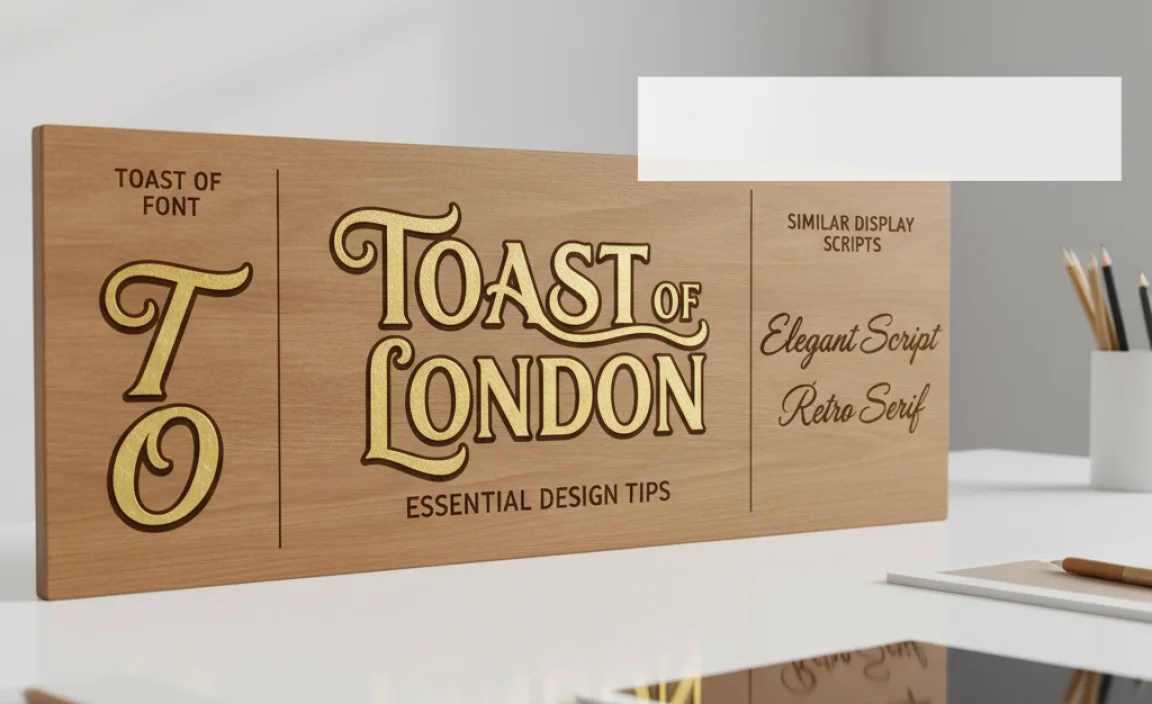
The world of display scripts is vast, and Toast of London sits among many other unique options. While each has its nuances, understanding how Toast of London differentiates itself can help when making crucial design decisions.
| Font Name (Example) | Toast of London Font | Key Differentiator/Feel | Best For |
|---|---|---|---|
| Brush Script MT | More refined, elegant, and British-inspired. | Slightly more formal script with a clear, readable stroke structure. | Luxury, heritage, invitations, classic branding. |
| Lobster | A very popular, friendly, bold, and casual script. | More flamboyant and playful, often feels more American diner-esque. | Casual branding, food trucks, fun event titles, personal projects. |
| Pacifico | Smooth, flowing, and relaxed. Often has a handwritten feel. | Very casual and approachable, feels like personal notes or surf-shop logos. | Casual websites, personal blogs, relaxed branding. |
| Great Vibes | Elegant, flowing, and decorative with more elaborate flourishes. | Noticeably more ornate and calligraphic than Toast of London. | Wedding invitations, formal announcements, sophisticated branding where flair is desired. |
Toast of London occupies a sweet spot: it’s sophisticated and professional without being overly stuffy, and it has character without being overly casual or flamboyant. Its British undertones also give it a unique niche.
Frequently Asked Questions (FAQ) about Toast of London Font
Q1: Is Toast of London a free font?
The availability of Toast of London font can vary. It’s often found on premium font marketplaces or included in font bundles. Always check the licensing terms where you intend to download it to ensure you have the right to use it for your project, especially for commercial use.
Q2: What kind of projects is Toast of London best suited for?
It’s excellent for logos, brand names, website headlines, packaging labels, invitations, and any design that aims for a vintage, elegant, artisanal, or sophisticated feel. Its strong personality makes it ideal for display purposes.
Q3: Can I use Toast of London for body text?
No, it’s generally not recommended for body text. As a stylized script font, it can become difficult to read in long paragraphs, especially at smaller sizes. It’s best reserved for headlines and short, impactful phrases.
Q4: What fonts pair well with Toast of London?
Simple, clean sans-serif fonts like Open Sans, Lato, or Montserrat are excellent partners. They provide readability and contrast without competing with the character of Toast of London. Understated serifs can also work for a more classic look.
Q5: How can I ensure Toast of London is readable on my website?
Use it primarily for headings and titles. Ensure the font size is large enough to appreciate its details. Always test it on different screen sizes and devices. Crucially, pair it with a clearly legible font for any accompanying text and ensure good color contrast between the font and its background.
Q6: Does Toast of London have a specific historical origin?
While named “Toast of London,” the font itself is a modern design inspired by vintage lettering styles from various eras. Its name evokes a sense of British heritage and classic charm, but it isn’t tied to a precise historical period in its creation.
Conclusion: Add a Touch of Classic Charm with Toast of London
The Toast of London font is a truly special typeface, offering a bridge between classic elegance and modern design needs. By understanding its strengths and applying these design tips, you can harness its unique character to


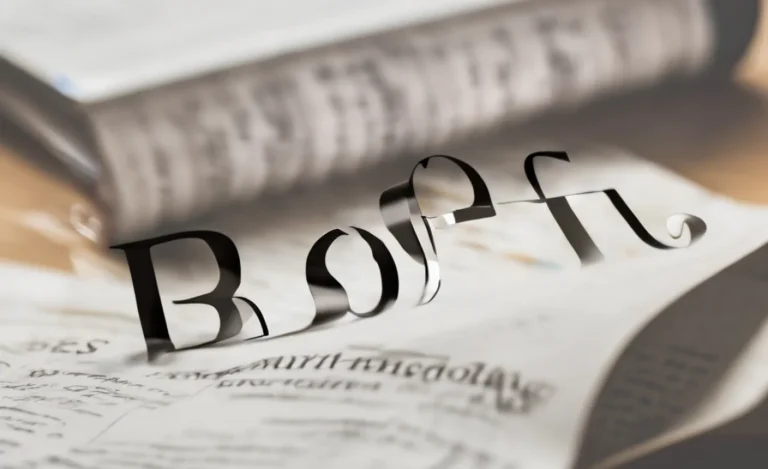
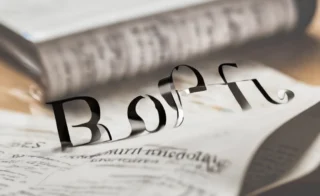




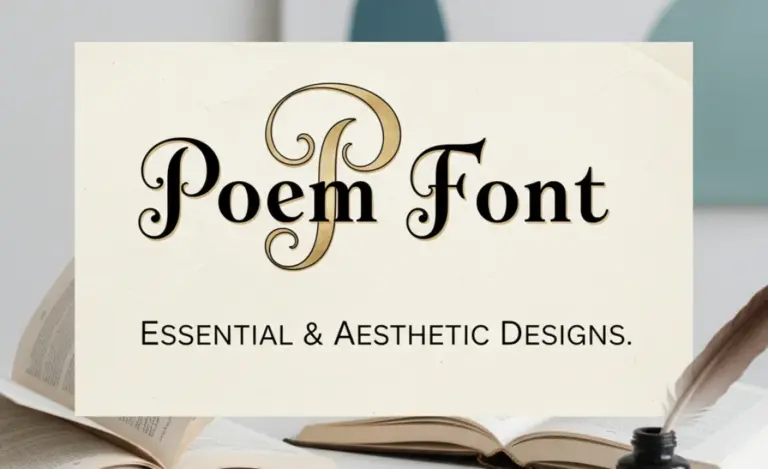

Leave a Comment